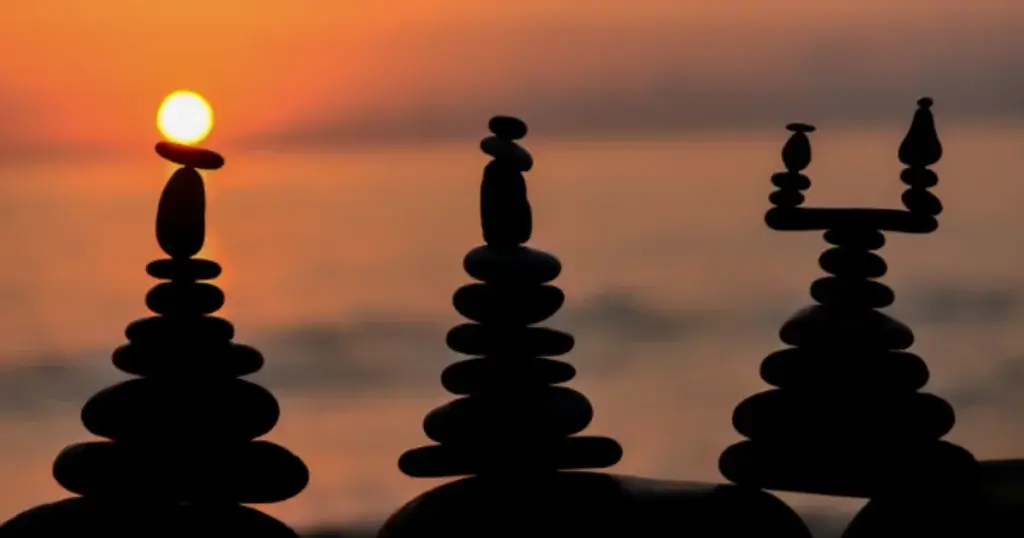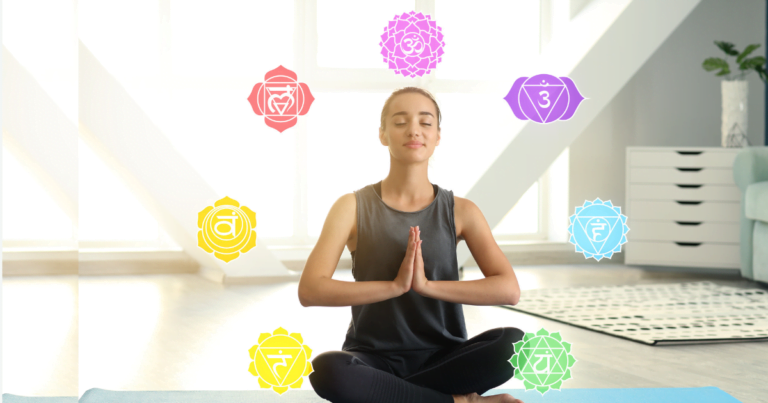Recharge and Thrive: The 7 Types of Rest You Need for a Balanced Life

In our fast-paced world, the concept of rest often gets relegated to the back burner. We push ourselves to exhaustion, believing that constant busyness equates to productivity. But the truth is, neglecting rest leads to burnout, decreased efficiency, and a weakened immune system.
Just like a car needs regular pit stops to refuel and recharge, so do we. However, rest isn’t a one-size-fits-all concept. There are seven key types of rest, each addressing a different aspect of our well-being. By incorporating all seven into your life, you’ll cultivate a sense of balance and inner peace, allowing you to truly thrive.
Table of Contents
1. Physical Rest: The Foundation of Wellbeing
Physical rest is the most fundamental type of rest. It refers to giving your body the time and resources it needs to repair and rejuvenate. This includes:
- Quality Sleep: Aim for 7-8 hours of uninterrupted sleep each night. Create a relaxing bedtime routine and establish a consistent sleep schedule.
- Napping: Power naps of 20-30 minutes can significantly boost alertness and cognitive function.
- Restful Activities: Engage in activities that promote relaxation and muscle recovery, such as yoga, stretching, or light walks.
- Active Listening to Your Body: Pay attention to your body’s signals. When you feel tired, take a break, listen to your body’s needs.
2. Mental Rest: Quieting the Busy Mind
Our brains are constantly bombarded with information. Mental rest involves giving your mind a break from the constant stimulation it experiences. Here’s how:
- Meditation: Mindfulness meditation practices help quiet the mind and reduce mental chatter.
- Mindful Activities: Engage in activities that require focus in the present moment, such as coloring, gardening, or spending time in nature.
- Digital Detox: Schedule regular breaks from screens and technology. Disconnecting allows your brain to truly unwind.
- Setting Boundaries: Learn to say no to requests that drain your mental energy.
3. Emotional Rest: Protecting Your Inner World
Emotional rest involves protecting yourself from emotional overload. This means:
- Setting Healthy Boundaries: Create boundaries in your relationships to avoid emotional manipulation or negativity.
- Expressing Your Emotions: Find healthy ways to express your emotions, whether through journaling, talking to a trusted friend, or creative outlets.
- Practicing Self-Compassion: Be kind and understanding towards yourself. Forgive yourself for mistakes and prioritize your own emotional well-being.
- Limiting Exposure to Negativity: Surround yourself with positive and supportive people. Limit your exposure to negativity in the news or social media.
4. Sensory Rest: Soothing the Overstimulated Senses
Our senses are constantly bombarded with stimuli – bright lights, loud noises, and constant information from screens. Sensory rest involves giving your senses a break from this overload. Here’s how:
- Create a Calming Environment: Dim the lights, use noise-canceling headphones, and declutter your surroundings to create a more calming environment.
- Spend Time in Nature: Nature has a restorative effect on the senses. Take walks in the park, listen to calming sounds of nature, or simply gaze at the clouds.
- Digital Detox: As mentioned earlier, limiting screen time allows your senses to truly rest from the constant visual stimulation.
- Engage in Calming Activities: Take a warm bath, listen to calming music, or practice gentle stretches to soothe your senses.
5. Creative Rest: Rekindling Your Spark
Creative rest allows your creative wellspring to replenish. It’s not about forcing creativity, but rather taking a step back to allow inspiration to flow naturally. Here are some tips:
- Embrace Unscheduled Time: Allow yourself time for unstructured activities. It’s often during these moments that creative ideas spark.
- Explore New Hobbies: Experiment with new activities that stimulate different parts of your brain. This can help break you out of a creative rut.
- Consume Inspiring Content: Immerse yourself in art, music, literature, or other forms of creative expression that ignite your own creativity.
- Don’t Pressure Yourself: Let go of the pressure to constantly be “on” creatively. Allow yourself to simply enjoy the process of exploration.
6. Social Rest: Recharging Your Social Battery
Social interaction is important, but we all have a limited capacity for social engagement. Social rest involves taking time away from social interaction to recharge your social battery.
- Alone Time: Schedule time for solitude. This allows you to process your thoughts and emotions without external stimulation.
- Selective Socializing: Be intentional about who you spend your time with. Prioritize interactions that leave you feeling energized and supported. Avoid draining situations or relationships that leave you feeling depleted.
7. Spiritual Rest: Connecting to Something Bigger
Spiritual rest is about connecting with a sense of purpose or meaning beyond yourself. This can involve:
- Religious or Spiritual Practices: Engage in practices that connect you to your faith or spirituality, such as prayer, meditation, or attending religious services.
- Spending Time in Nature: Nature has a profound spiritual effect on many people. Immerse yourself in its beauty and vastness.
- Acts of Service: Helping others can foster a sense of connection and purpose. Volunteer your time or perform acts of kindness for others.
- Gratitude Practice: Regularly reflect on the things you’re grateful for. This cultivates a sense of peace and contentment.
Creating a Restful Lifestyle
Remember, incorporating all seven types of rest into your life is an ongoing process. Experiment and discover what works best for you. Here are some additional tips:
- Listen to Your Body: Pay attention to the subtle cues your body sends you. When you’re feeling tired, drained, or overwhelmed, it’s time to prioritize rest.
- Schedule Rest: Don’t leave rest to chance. Schedule time for sleep, relaxation activities, and solitude just as you would any other appointment.
- Self-Care is Not Selfish: Prioritizing rest and self-care is not a sign of weakness; it’s essential for your overall well-being. When you take care of yourself, you’ll be better equipped to handle life’s challenges and be present for the people you care about.
By embracing the concept of rest in all its forms, you’ll embark on a transformative journey towards a life brimming with vitality and purpose. It’s not just about squeezing in a few extra hours of sleep here and there, but rather weaving a tapestry of restorative practices into the very fabric of your existence. Imagine yourself as a magnificent garden, teeming with vibrant flowers and life-giving fruits. To flourish in all your splendor, you need not only the nourishing sun and invigorating rain, but also the quietude of nightfall, the gentle tilling of the soil, and the space for roots to delve deep and replenish.
Each type of rest acts as a nurturing element, addressing a specific aspect of your well-being. Physical rest, the foundation of this holistic approach, ensures your body has the time and resources to rebuild and rejuvenate. Quality sleep becomes a nightly sanctuary, a time for your muscles to ease, your mind to defragment, and your immune system to fortify itself. Mental rest fosters a haven for your inner world, a place where the incessant chatter quiets and a sense of calm washes over you. Meditation becomes a sacred ritual, a chance to reconnect with the present moment and quiet the storm of racing thoughts.
Emotional rest shields your inner sanctum from negativity. Setting healthy barriers becomes an act of self-love, protective you from emotional manipulation and fostering a sense of personal safety. Expressing your feelings through journaling, creative shops, or relying on conversations permits you to launch pent-up feelings and navigate challenges with more clarity. Sensory rest offers a soothing balm in your overstimulated senses. Imagine a relaxing surroundings: dimmed lighting fixtures, tender music, and a decluttered area that invites tranquility. Nature will become your safe haven, a place wherein the cacophony of day by day lifestyles fades and the gentle symphony of rustling leaves and birdsong takes its area.
Creative rest allows your wellspring of inspiration to replenish. It’s not about forcing creativity, but rather taking a step back and allowing fertile ground for new ideas to blossom. Unscheduled time becomes a playground for exploration, a space where you can dabble in new hobbies, immerse yourself in inspiring art or literature, and rediscover the joy of simply being present in the moment. Social rest acknowledges that even the most social butterflies need time to recharge. Alone time turns into a cherished ritual, a space for introspection and quiet contemplation. Selective socializing permits you to prioritize interactions that energize and aid you, creating a social circle that uplifts and empowers you.
Finally, spiritual rest connects you to a sense of purpose that transcends the everyday. Whether it’s through religious practices, acts of service, or simply connecting with the awe-inspiring vastness of nature, fostering a sense of connection to something bigger than yourself cultivates profound peace and a renewed sense of meaning.
Conclusion
By incorporating these diverse forms of rest into your life, you’ll cultivate a state of vibrant equilibrium. It’s a continual process, an ongoing dance between action and restoration. Listen to your body’s subtle cues, schedule time for these restorative practices, and remember, prioritizing rest is not a sign of weakness but a testament to your commitment to a thriving and fulfilling life. As you embrace the power of rest in all its forms, you’ll find yourself not just surviving, but truly blossoming in every aspect of your being.






